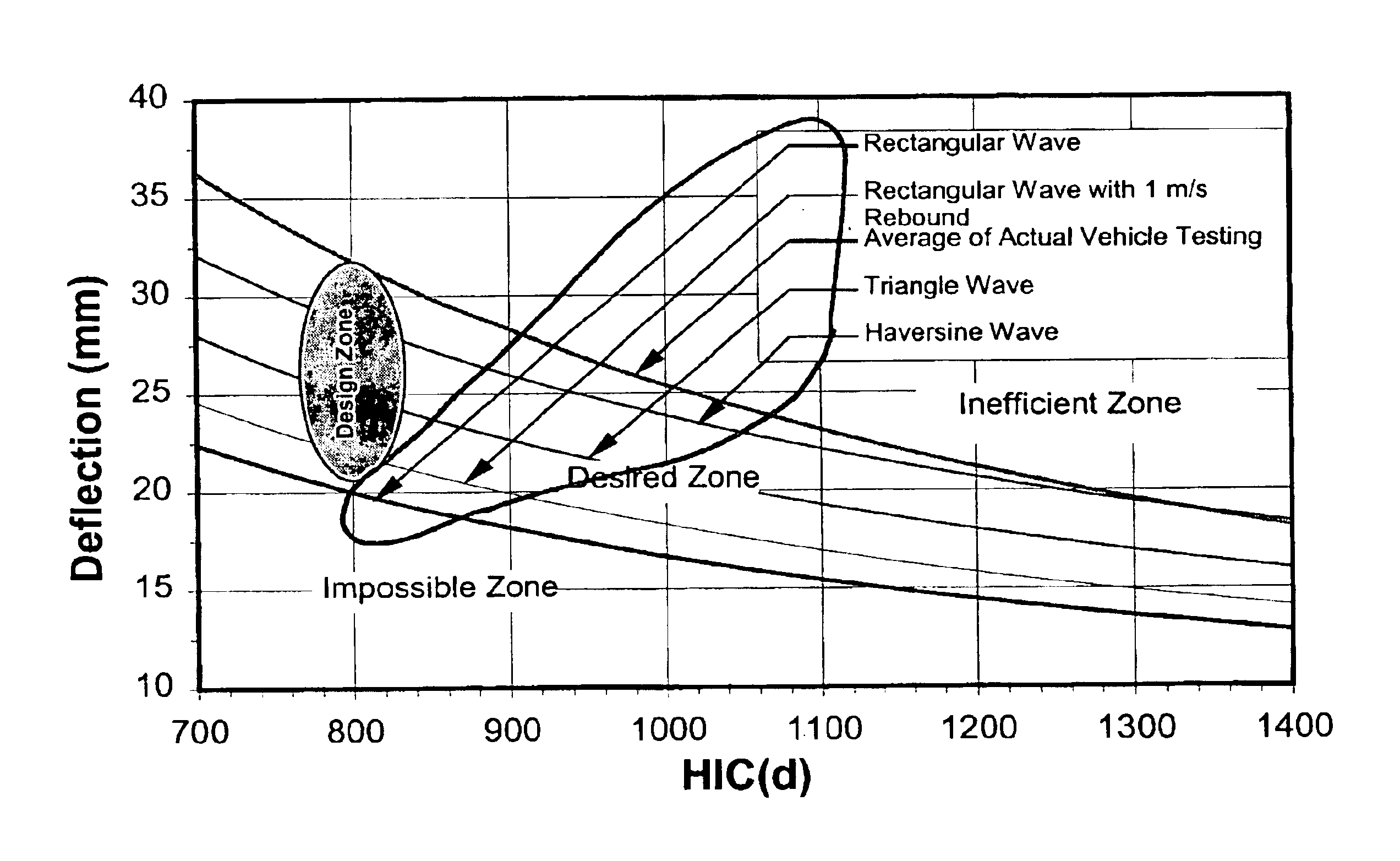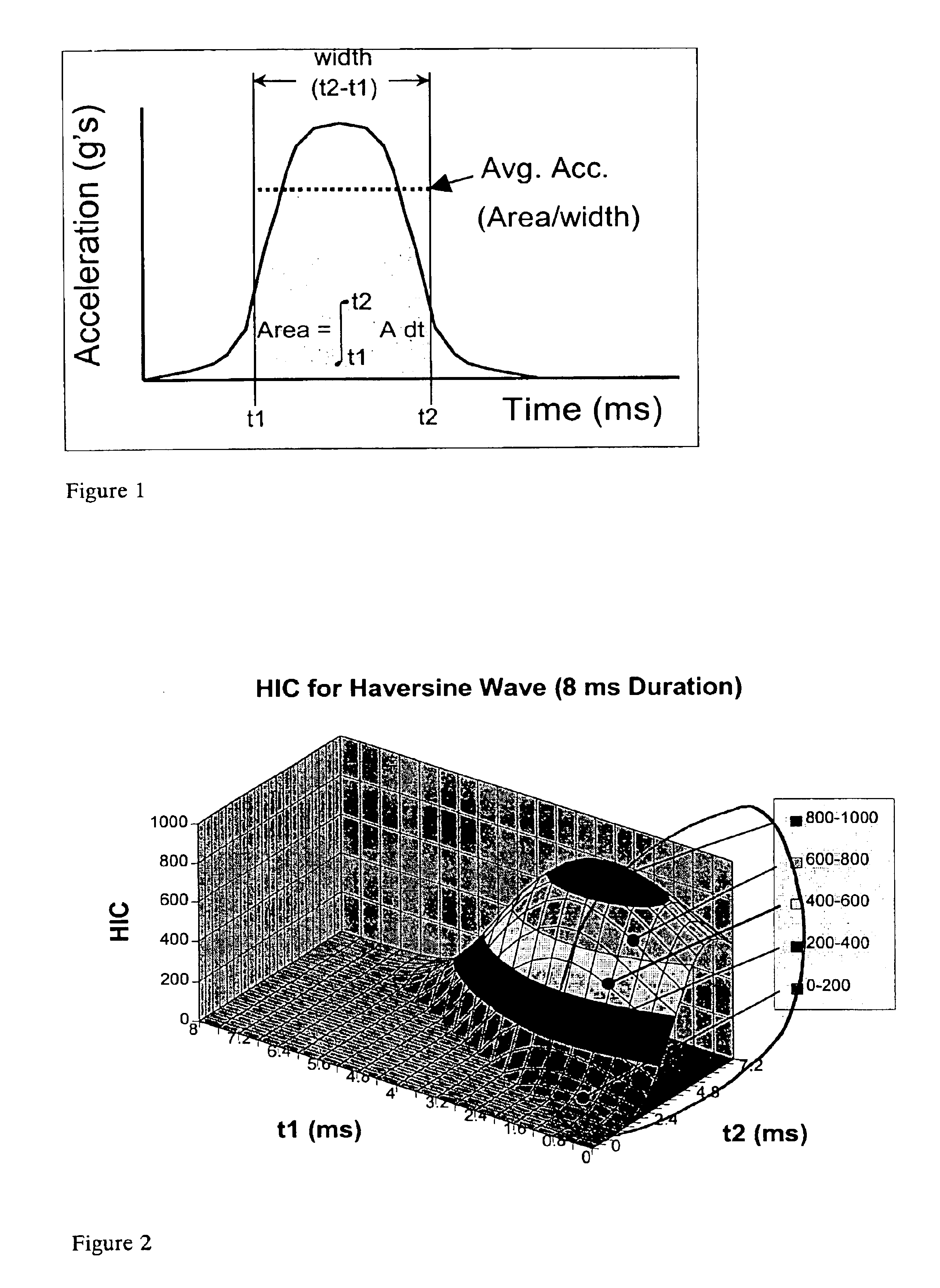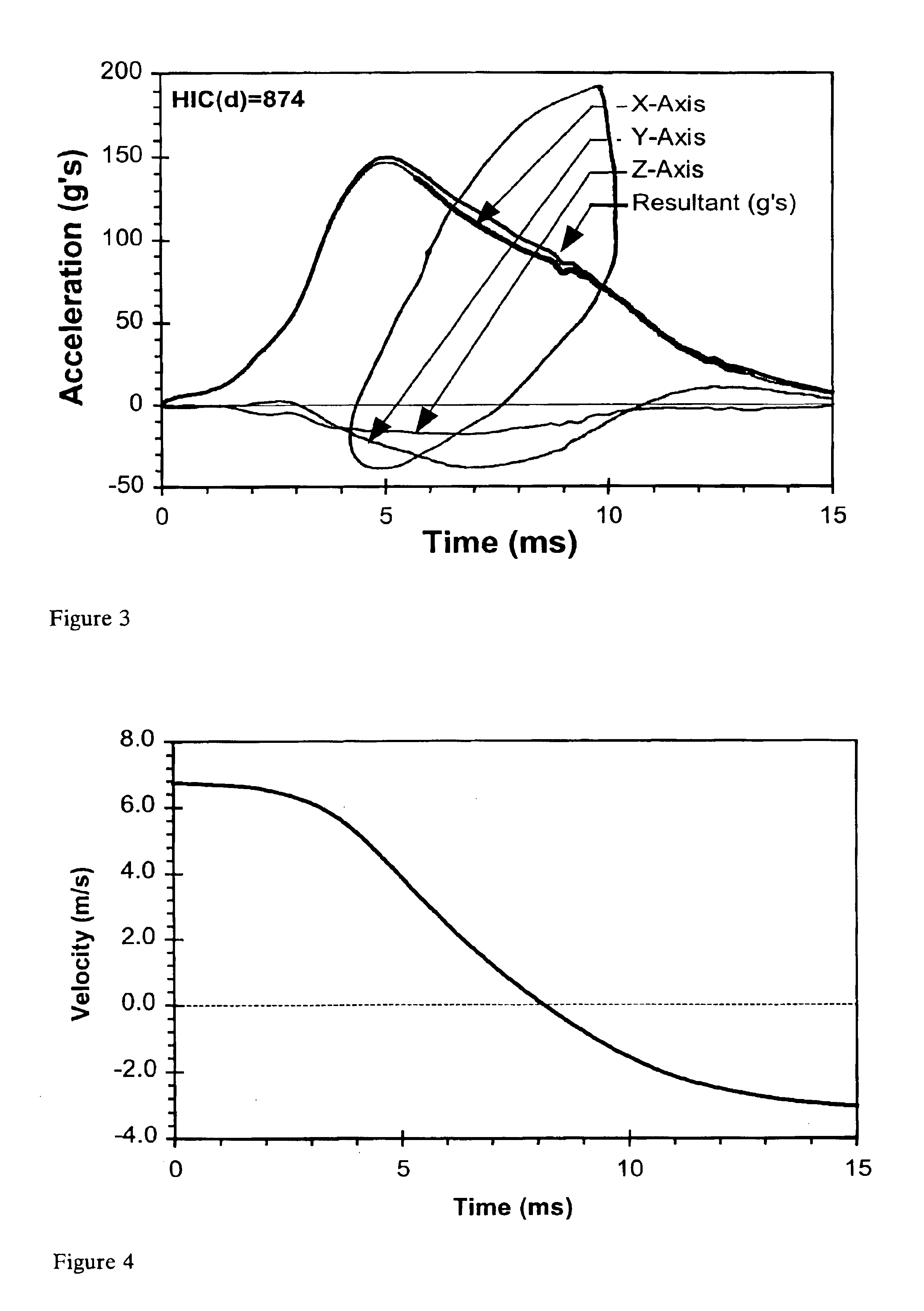Method for improving the energy absorbing characteristics of automobile components
a technology for automobile components and energy absorption, applied in the direction of roofs, instruments, pedestrian/occupant safety arrangements, etc., can solve the problems of inability to repeat or consistently test from one laboratory to the next, requires additional research effort, and only works approximately half the time, so as to improve the design of countermeasures and evaluate material and structure efficiently
- Summary
- Abstract
- Description
- Claims
- Application Information
AI Technical Summary
Benefits of technology
Problems solved by technology
Method used
Image
Examples
Embodiment Construction
[0043]The method according to this invention provides a cost-effective solution to meeting safety standards and is applicable to any material, including but not limited to metal, glass, polymers, organics (such as pulp, paper, cardboard, etc.) and synthetics having any structural form including but not limited to porous, foamed, fibrous, composite, corrugated, etc.
[0044]The NHTSA safety standard is designed to reduce head injury sustained by a blunt impact in a vehicle crash. It applies to headliners, pillar trim, and overhead systems. Testing to meet the safety standard requires a ten pound simulated human head, called a free motion headform (FMH) to be launched into specific points of the vehicle at 6.7 m / s (15 miles per hour). Three accelerometers are placed at the center of gravity of the FMH to measure the deceleration of the FMH during impact. A head injury criterion (HIC) number is calculated based on the vector sum of the three decelerations measured with respect to time. Th...
PUM
 Login to View More
Login to View More Abstract
Description
Claims
Application Information
 Login to View More
Login to View More - R&D
- Intellectual Property
- Life Sciences
- Materials
- Tech Scout
- Unparalleled Data Quality
- Higher Quality Content
- 60% Fewer Hallucinations
Browse by: Latest US Patents, China's latest patents, Technical Efficacy Thesaurus, Application Domain, Technology Topic, Popular Technical Reports.
© 2025 PatSnap. All rights reserved.Legal|Privacy policy|Modern Slavery Act Transparency Statement|Sitemap|About US| Contact US: help@patsnap.com



